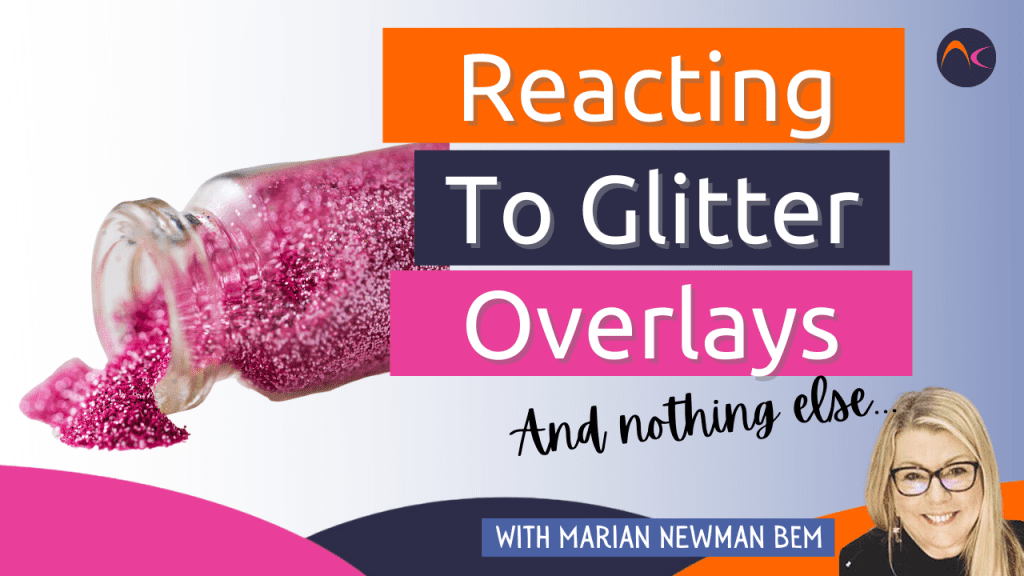This is being written in mid-December so there is lots of glitter around! Funny that!
It seems a lot of nail pros are reacting to an overlay when it contains glitter but not when it doesn’t.
Why is that? Well, let’s think about it…..
Es muy poco probable que alguien reaccione a la purpurina en sí, ya que se trata de un sólido. Sin embargo, es posible que se produzcan reacciones a una purpurina no aprobada cosméticamente (es decir, una purpurina para manualidades).
So what is going on? What may be going on is the glitter inhibiting a proper cure! (Please watch the Las alergias y cómo se producen vídeo para entenderlo mejor)
The pieces of glitter may be too many and/or too big to allow the overlay, whether it’s a UV gel or L&P, to properly cure (the video will explain the polymer linkage). They may be blocking linkage and leaving some unreacted monomers behind which can then leach out!
Visualize this: watch how the polymer links are formed. Imagine a huge (and it is huge in comparison to the monomers) piece of glitter forms a ‘wall’ to prevent these links from happening. Unreacted monomers (or oligomers) can be trapped behind this wall.
Correctly formulated UV gel polish with glitter will have addressed this. It may be that the ‘manufacturers instructions’ recommend 1-2 very thin layers so there is not too much glitter that is stopping a ‘proper cure’. If not, the good quality brands will have made sure that an ‘undercure’ is unlikely to happen.
The same applies to L&P polymer powder and sistemas de inmersión.
A polymer powder with glitter needs to be correctly formulated to allow a proper cure. PLUS there are manufacturers’ instructions on the ratio of powder to liquid monomer and the thickness of the layers of an overlay. (This is another reason to undertake brand education).
Dip powders have a similar potential issue. Those using a UV gel dip system, they dip an uncured UV gel coating into the powder. This sinks into the coating and is then cured. It COULD result in an undercured coating. It is less likely to occur with a cyanoacrylate dip system but not impossible.
Véase también el BPO(peróxido de benzoilo) ¿Qué y por qué? blog on BPO allergies on polymer powders that are not formulated specifically for dipping systems.
There are some brands that suggest mixing pigments and glitters with their products. They should recommend the percentage that will still allow a proper cure. This is often 30% or less. For the bigger glitters, this is likely to be a lot less for all the reasons described above.
Sin embargo, si reacciona con o sin purpurina, ¡tiene una alergia! La única forma de solucionarlo es retirar todos los productos y someterse a una prueba dermatológica para descubrir exactamente a qué ingredientes reacciona. Esto te permitirá encontrar una marca con la que puedas seguir trabajando. Tomar medicamentos o utilizar cremas sólo suprime los síntomas. NO detienen la causa, que le acompañará para siempre.
En conclusión, utilice marcas de buena calidad y de confianza. Se habrán sometido a pruebas exhaustivas para una cura adecuada y evitar así cualquier reacción no deseada.


